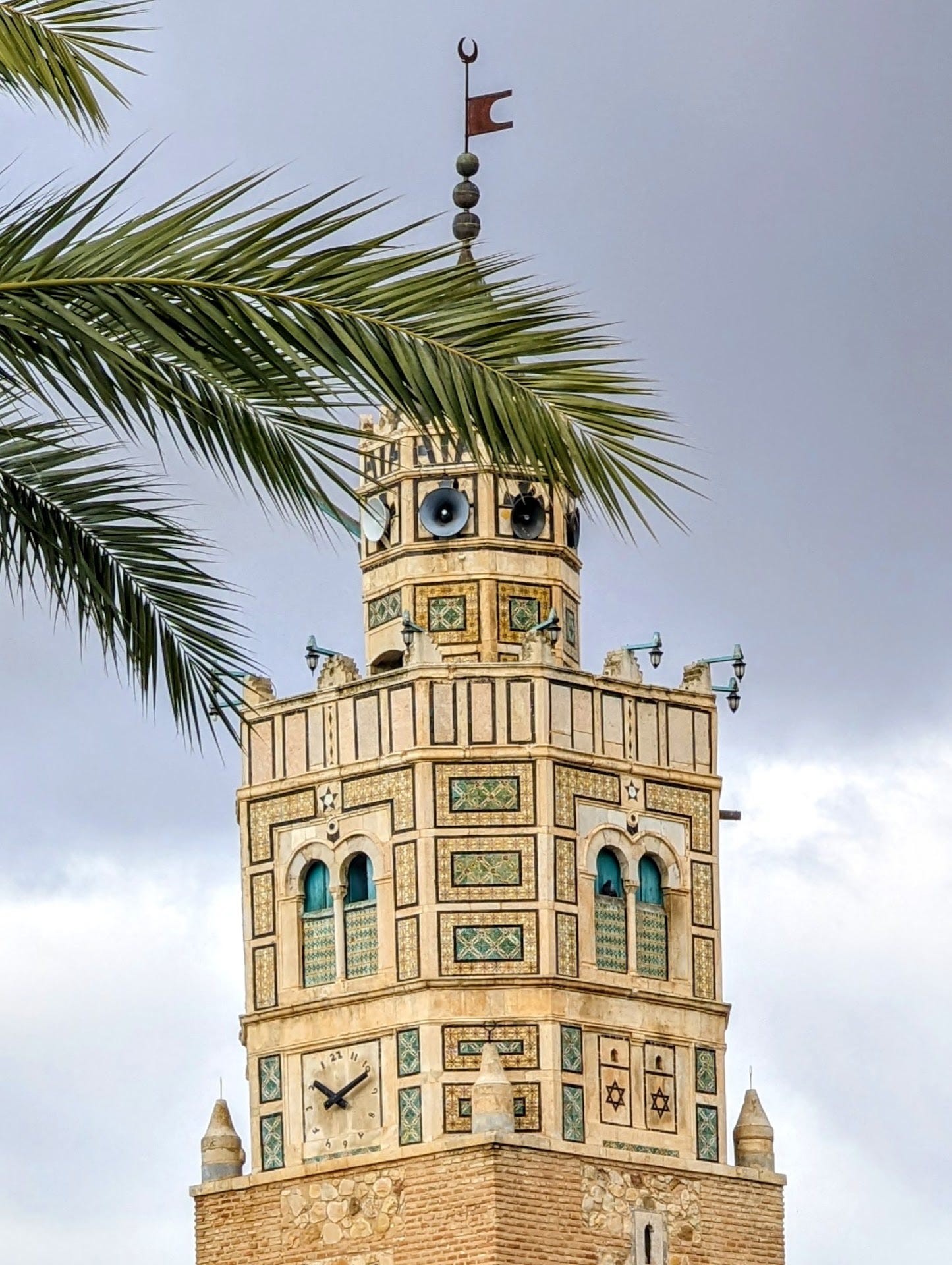A Monument to Bygone Coexistence: the World's Largest Mosque Minaret with the Jewish Star
In the heart of Islamic Northern Africa, a towering minaret bears a curious detail: the Jewish Star of David.
📍 Testour, Tunisia
In the heart of Testour, a small Tunisian city, the Grand Mosque's minaret bears a peculiar testament to a bygone era of interfaith harmony. Built in the 17th century, the mosque's design incorporates Jewish Stars of David, a silent homage to the shared future envisioned by Jews and Muslims fleeing persecution during the Spanish and Portuguese Inquisition.
The layout of Testour's old city reflects the Andalusian roots of its builders, Jews and Muslims who fled their Iberian homeland. Gridded streets converge upon a central square anchored by a mosque instead of the customary churches found in their native towns. This architectural echo of their lost land speaks volumes of their deliberate choice for coexistence, leaving religious persecution behind.
But the mosque's unique characteristic goes beyond a singular Star of David. Its minaret is the only to feature a functioning clock with numbers arranged in reverse and its hands turning counterclockwise. This curious timepiece symbolizes the builders' yearning for a return to an age of tolerance in pre-Inquisition Iberia. From the 16th to the 18th centuries, Tunisia offered relative religious freedom to its Jewish population under Ottoman rule. While minor cultural frictions existed between native Tunisian Jews ("Touransa") and newcomers from Iberia ("Grana"), Jews and Muslims largely coexisted.
Today, the days of coexistence between Tunisian Jews and Muslims have largely faded. The Jewish community reached its peak in 1730, with 600 residents accounting for one-fifth of the town's population. However, civil wars in the 18th century and cholera epidemics in the 19th decimated their numbers.
World War II later brought a cruel twist of fate. Unlike its Maghrebi neighbors, Tunisia fell under Nazi occupation, unleashing a new wave of persecution upon its Jewish community, including those in Testour. Many were herded into labor camps, where 70 perished and hundreds endured torture and deprivation.
The establishment of Israel in 1948 dealt the final blow to Testour's fragile interfaith harmony. Tunisia became an increasingly untenable home for many remaining Jews. The Great Synagogue of Tunis, once the nation's largest, was torched during anti-Jewish riots in the 1967 Six-Day War. More recently, the "Arab Spring" witnessed demonstrators chanting hateful slogans, including “Death to Jews,” outside Tunisia’s few remaining synagogues.
Tunisia's present reality starkly contrasts the inclusive society envisioned by the builders of the Testour Mosque. The Jewish community has dwindled from over 100,000 to a mere 1,500, with none residing in Testour. The world's only Star of David-adorned minaret stands as a reminder of a faded coexistence, leaving behind an echo of a more tolerant past.



A towering minaret in Tunisia bears a surprising feature: the Star of David. Discover the forgotten story of Jewish-Muslim harmony in Testour. 🇹🇳
https://superlative.substack.com/p/monument-to-bygone-coexistence